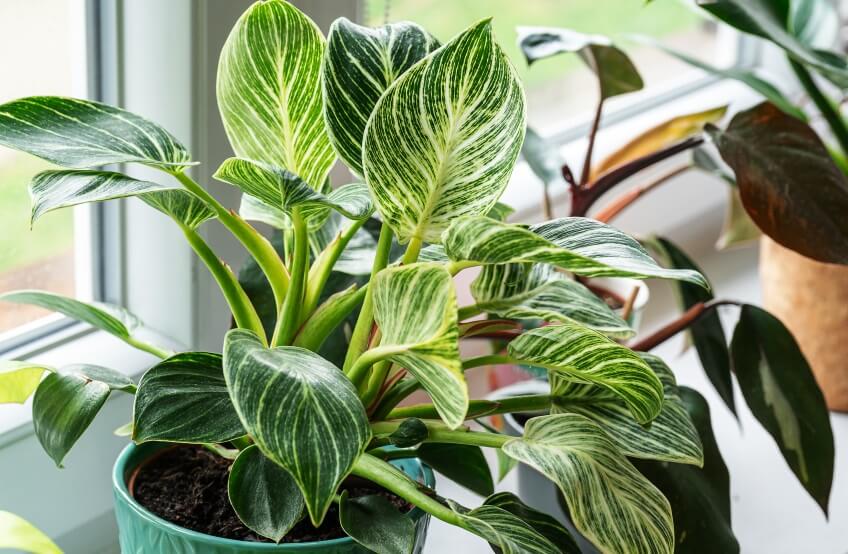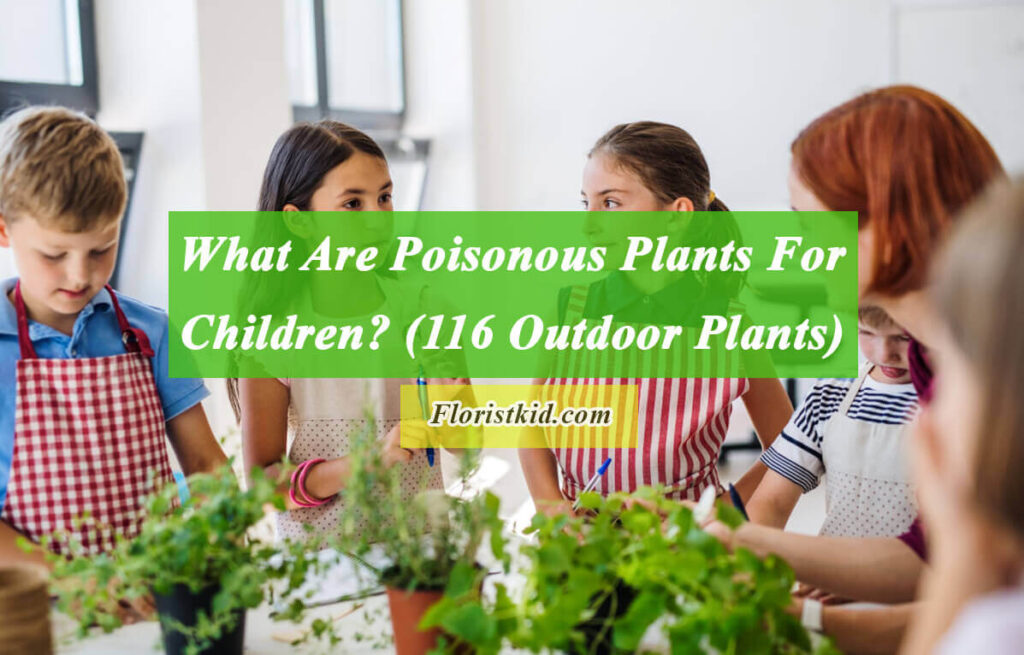Philodendrons are renowned for their vibrant foliage and ability to thrive in indoor environments, making them a popular choice for plant enthusiasts worldwide. Belonging to the Araceae family, philodendrons encompass a diverse group of flowering plants native to the tropical regions of the Americas. However, concerns about their toxicity to humans often arise, prompting questions about the safety of having these plants in homes and offices. In this article, we will explore the potential risks associated with philodendrons and understand whether they pose a threat to human and animal health.
If you are interested in this topic, you can also read
<<Is Lantana Poisonous? >> and <<Is Lavender Poisonous? >> articles.
Toxic Components Of Philodendrons
The primary toxic component of philodendrons is calcium oxalate. This compound exists in the form of microscopic needle-like crystals within the plant’s tissues, including leaves, stems, and roots. When these tissues are damaged or ingested, the calcium oxalate crystals can cause irritation and discomfort upon contact with mucous membranes, such as those in the mouth, throat, and digestive tract [1, 2].
Are Philodendrons Poisonous To Humans?
Yes, philodendrons are poisonous to humans. It is essential to note that while philodendrons can cause discomfort, severe toxicity cases are rare, and most individuals recover fully with appropriate care and treatment. Individuals with heightened sensitivity or allergies may experience more severe reactions [3].
Are Philodendrons Poisonous To Cats & Dogs?
Yes, philodendrons are poisonous to cats and dogs. Pets may be drawn to chewing on philodendron leaves or stems, putting them at risk of exposure to these toxins.
Symptoms Of Exposure In Humans And Animals
Symptoms Of exposure to philodendron sap or plant parts are common in humans and animals, including [4, 5, 6]:
Oral Irritation
Swelling, burning sensation, and pain in the mouth and throat.
Difficulty Swallowing
This can cause as a result of swelling and irritation of the throat.
Nausea And Vomiting
Nausea and vomiting are common reactions to the toxins present in philodendrons.
Excessive Drooling
A natural response to the irritation caused by the plant’s toxins.
Precautions And Treatment For Humans
To minimize the risk of adverse effects from philodendron exposure, consider the following precautions [7]:
- Avoid touching or ingesting philodendron leaves, stems, or sap, especially if you have a history of sensitivity to plant toxins.
- Wash hands thoroughly after handling philodendron plants or working with them in the garden.
- Keep philodendrons out of reach of children and pets, as accidental ingestion can occur.
- If exposure occurs, rinse the affected area with water and seek medical attention if symptoms persist or worsen.
Treatment For Humans
Phytophotodermatitis, the skin irritation caused by contact with philodendron, can also cause oral irritation if the plant is ingested. The sap of this plant contains chemicals called psoralens, which can cause a reaction when exposed to sunlight. If you are experiencing oral irritation after ingesting philodendron, here is what you can do [8]:
Rinse Your Mouth
Gently rinse your mouth with cool water to help remove any remaining plant residue and soothe the irritation.
Avoid Further Ingestion
Refrain from eating or drinking anything else until the irritation subsides to prevent aggravating the symptoms.
Use A Soothing Mouth Rinse
A mouth rinse containing ingredients like saltwater or aloe vera may help soothe the irritation and reduce inflammation.
Apply Topical Treatments
If there are visible signs of irritation, such as redness or swelling, you can apply a topical corticosteroid cream or oral analgesic gel to the affected area. Be sure to follow the instructions on the product label.
Stay Hydrated
Drink plenty of water to keep your mouth moist and help flush out any remaining irritants.
Monitor For Worsening Symptoms
If the oral irritation persists or worsens, or if you develop other symptoms such as difficulty breathing or swallowing, seek medical attention promptly.
Remember, prevention is key. Avoid ingesting philodendrons, and always handle them with care to minimize the risk of exposure. If you are unsure about the severity of your symptoms or how to manage them, consulting a healthcare professional is always a good idea.
Precautions And Treatment For Pet Owners
While philodendron toxicity in pets is generally mild and rarely fatal, it can lead to discomfort and health issues that require veterinary attention [9].
To minimize the risk of philodendron toxicity in pets, consider the following precautions:
- Place philodendron plants out of reach of pets, or opt for pet-safe houseplants to ensure their safety.
- Train pets to avoid chewing on plants by providing appropriate toys and distractions.
- Supervise pets when they are in areas where philodendrons are present, especially if they are prone to exploring and nibbling on foliage.
- If ingestion occurs, contact a veterinarian immediately for guidance and treatment.
By taking proactive measures and being aware of the potential risks, pet owners can create a safe environment for their animals while enjoying the beauty of philodendron plants in their homes.
Treatment For Pet Owners
If your pet has ingested philodendron, it is crucial to act quickly. Here are the steps to take if you suspect your pet has been poisoned by philodendron ingestion:
Remove Your Pet From The Source
If you catch your pet in the act of ingesting the plant, remove them from the area immediately to prevent further consumption.
Identify The Symptoms
Look for signs of poisoning, such as vomiting, diarrhea, drooling, difficulty breathing, excessive thirst, lethargy, tremors, seizures, or changes in behavior.
Contact Your Veterinarian
Call your veterinarian or an emergency veterinary clinic right away. Provide them with as much information as possible, including the type and amount of plant ingested, your pet’s symptoms, and its size and weight.
Follow Your Veterinarian’s Advice
Based on the severity of your pet’s symptoms, your veterinarian may instruct you to induce vomiting at home or may recommend bringing your pet in for immediate treatment. Follow their instructions carefully.
Monitor Your Pet
Keep a close eye on your pet’s condition while waiting for veterinary help. If you notice any worsening symptoms, such as difficulty breathing or seizures, seek emergency veterinary care immediately.
Prevent Future Incidents
Take measures to prevent your pet from accessing toxic plants in the future. This may involve removing poisonous plants from your home or keeping them out of your pet’s reach.
Bring A Sample Of The Plant
If possible, bring a sample of the plant your pet ingested to the veterinarian to help with identification and treatment.
Remember, time is of the essence when dealing with plant poisonings in pets. The quicker you seek veterinary help, the better the chances of a positive outcome.
Conclusion
While philodendrons add beauty to indoor and outdoor spaces, it is crucial to be aware of their potential toxicity to humans and animals. You can enjoy these plants safely by understanding the risks and taking appropriate precautions. Remember to prioritize safety when selecting and caring for houseplants, especially in households with children and pets.












